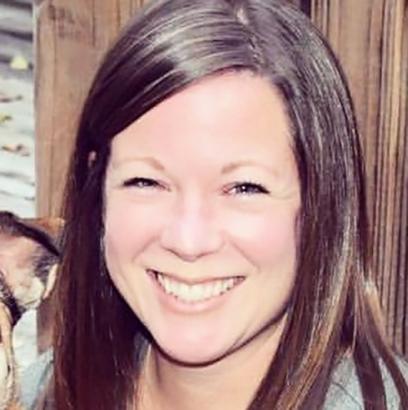Most educators are well acquainted with the phenomenon known as “summer brain drain,” which refers to the learning loss that many students experience during the summer break from school. Researchers estimate that students can lose an average of two to three months of learning proficiency in math and reading.
For students with special healthcare needs and those with physical or intellectual disabilities, the losses from interruptions to classroom learning time—like millions of children around the country are experiencing due to the coronavirus pandemic—can be more exaggerated and harder to overcome, says Caroline Marney, a 16-year veteran special education instructor in the Houston Independent School District.
“We know all students, especially children with special needs, thrive when there’s consistency,” Marney says. “Without that consistency, I’m convinced kids will lose ground, and we will likely see regression that will need to be addressed when this crisis has ended.”
Marney, who chairs the special education department at a Houston-area high school, says she and her SPED colleagues are working with their students and families to provide distance learning. But teaching children with special needs and disabilities remotely is far from ideal.
“A lot of my teacher friends and I have talked about this, and we all agree that there’s really no way to effectively teach our students via a computer,” Marney says. “I think that’s largely true for all students, but it’s especially true for special education students.”
And Marney’s school is technically and technologically ahead of the game. At the high school where she teaches, every student has a laptop. But just having a laptop isn’t enough for students with specialized learning needs, she says.
“The question really is, ‘How am I supposed to teach my students on a device when many of them aren’t able to work independently and outside of a very structured environment?’” Marney says. “I believe this crisis requires a mind shift in how we approach instruction. We have to think in terms of instructing parents to then instruct their students, because trying to virtually teach our students just isn’t effective.”
Marney and the other special educators at her school are responsible for instruction for 140 students—some who are nonverbal, some who require assistance with personal care, and some who have a range of physical needs that are normally met at school—like speech and occupational therapy.
“We are contacting every family to check on needs and to make sure they have internet access,” Marney says. “My biggest concern is that there are some students we can’t contact. In some of the high-poverty neighborhoods where our children live, that’s a real concern.”
Marney also worries about how the school closings are affecting special educators’ ability to fulfill the specific terms of students’ federally mandated IEPs (individualized education programs). An IEP is a plan developed by a team of special education teachers and service providers to provide a quality learning experience based on each child’s needs. IEPs must be reviewed—together with students, their families and a team of educators and service providers—on a regular basis to track a child’s progress.
“I’m really curious about what the federal government will say about the IEPs, and there really isn’t much guidance around that right now,” Marney says. “At the end of the day, our students should receive compensatory services” to make up for missed services under students’ IEPs. “There are certain IEP goals—like instruction in life skills—that can’t be done at home.”
The federal government and the Texas Education Agency have since released guidance providing additional clarification about school personnel’s obligation to support students during school closures.
And school districts will need additional funding, and possibly even more SPED staff, so that compensatory services and instruction can be provided.
In the meantime, there are many unanswered questions, Marney says. “How do we pay for the compensatory time students need when we already are underfunded? How do we do this without overburdening teachers and staff who already have overwhelming caseloads? How do we hold IEP meetings remotely? Who will fight to ensure that compensatory time is given, not just to kids in wealthy schools, but to all children?”
She adds: “The one thing I hope will come from this is for teachers and our union—the Houston Federation of Teachers—coming together to help empower parents to be stronger and better-informed advocates for students.”
The AFT has developed a resource, “Supporting Students with Disabilities during the COVID-19 Pandemic,” to provide some implementation advice for educators and staff supporting special-needs students.
Read more on concerns about compensatory services.
[Angela Callahan]


